You could have a company that’s running really smoothly, but in every facet of business, things can always be better. If you’ve got projects that are being stuck through the pipeline, or you’ve got meetings that are slogging on rather than actually being productive, then it’s time to start thinking about how you can improve your business efficiency.
You want to be able to get the traction going on your business and not get stuck in the mud along the way. When you improve the efficiency of your business, you’ll be able to maintain productivity, keep your business pushing forward, and enable yourself to grow. There are plenty of ways that you can do that, but efficiency is important, so we’ve got some tips to help you to get there.
- Lean into the power of software. There are so many different places in your business that you can implement software to help you to do things better. Whether you’re sending out pay stubs to employees automatically on payday, sending receipts to vendors when bills have been paid, or you are requesting money or even planning staff scheduling with Sling leaning into software is important. When you automate monotonous tasks with software, you’re going to save yourself and your employees time and you’ll be able to do more productive tasks along the way. Sometimes these tasks require better critical thinking and even a human touch. While it can be pricier to implement automated processes, at the very beginning, it’s always going to be worth it.
- Encourage a face to face chat. It’s always a good idea to send a quick e-mail or a chat message to a coworker, especially if you are a remote worker. But if you work in an office it can actually take more time for you to do that than it can just to nip over to your colleagues desk and ask them a question. Face to face communication really can speed up the process of solving a problem or answering a question that needs answered. You don’t need to have people hugging the water cooler and having an in depth conversation, but you do need them to be able to ask each other questions quickly and efficiently. Collaborative work depends on it.
- Where you can, limit interruptions. Do you really need to have multiple staff meetings? Do you need to be hooking an hour or so out of your employees day every day just for a stand up? You really don’t. Most of the things that can be discussed can be done in an email and you can understand that people would appreciate just being able to get on with their work. Blocking out any chunks of time for uninterrupted work can help your employees to focus better, and this helps you to improve efficiency. You do not need to have multiple meetings a day, not when you can condense every meeting that you have into one meeting per week.
- Never let a meeting go beyond 10 minutes. Unless you have a client meeting that requires use of a boardroom tea and coffee and biscuits and a couple of hours of takeout food, you should condense all of your meetings to a 10 minute company stand up. Asking everybody to log into teams or gathering everybody in the boardroom for 10 minutes to help you to give any announcements that need to be given or communicate any messages that need to be communicated. This will cover the basics in 10 minutes flat and this will help you to huddle up. This is a process that will keep your time running more efficiently and you can get through any pointers in the meeting in those minutes. Any follow up questions can be sent via email if there’s no time to answer questions in the room.
- Stop multitasking. If you want to be more efficient, you need to let go of the multitasking idea and go on to single tasking. We all know that we are excellent multitaskers, but all it does is put people under pressure and encourage burnout.People can potentially multitask, but it shouldn’t be expected. They’re not necessarily being more productive if they’re doing three things at once. Single tasking or focusing on one task until it’s finished comes into play here. It’s important that you up that game because you can guarantee that people will feel and be more productive knowing that they are actually ticking off jobs rather than trying to keep all of their fingers in all the pies and do a little bit of every job.
- Allocate time effectively with scheduling. While you’re scheduling your employees for their daily shifts or for their overtime, you should also think about having a software that internally schedules allocated time. If somebody needs help from another department, it’s never going to be just a minute of that person’s time. Having time measured in chunks can really help. This way you can schedule a quick meeting with the designated time span and stick to the topic that you really do have to discuss. If you need to meet for 10 minutes, make it a 10 minute meeting.
- Stick with the processes that you’ve established. If you’ve got projects underway, trying to speed things up under the guise of efficiency is going to result in cut corners. If you have an established process for projects, keep that going. It’s OK if jobs or projects take a lot longer to finish if they are done right. It’s not OK to try and cut any corners in the name of efficiency. That’s going to end up costing you more time and more money in the end when you have to go back to fix it. It’s always a good idea to make sure that you are sticking with the processes that you’ve got so that you can ensure that you actually get the job done right.
- Let go of e-mail. E-mail is actually not an ideal method of communication or collaboration. Task management software such as Trello is a better option because it means that all of your communication and your progress in your work is in one place. Task management software for each designated team can help everybody work together, and if you allow everybody access to everybody’s work, we can all see what we’re working on at the same time. This allows you to be more efficient, it helps you to track progress, and it also helps you to stay on task. It’s going to save everybody the time if they can access everybody’s boards on Trello because they can see what the other departments are up to and where they are up to in their project cycle.
- Promote open communication where you can. Encouraging your employees to communicate openly will help you to solve problems faster. This makes you a much more efficient business, and it allows your employees to get to know their colleagues. People should learn who they are working with because these are the people that they’re going to rub shoulders with every single day on every single project. There should never be a stop on communication in the office, it should just be used effectively.Make sure that people know that they can give feedback where necessary, and make sure that you learn to teach employees that they can’t communicate. Communication is important for feedback, ideas, and departmental communication. You can’t be everywhere at once, but your employees might be able to spot an area of the company that needs more streamlining if you are allowing people to communicate better. This way, everybody will see the problems and you have a collaborative team.
- Know when enough is enough. It is important to smooth out as many things as possible to make your company run more efficiently, but there also has to be a line drawn. Striving for too much efficiency can trip you up early on. You need to make sure that you are encouraging business growth and not every process can or should be automated or made more efficient. Not every meeting is going to end a scheduled 10 minutes, and not every meeting is going to be effective unless you have a list of things to discuss.
There is nothing wrong with striving for efficiency in your business, so you need to make sure that you don’t allow your goals to run away with you. Through trial and error and with the feedback you can get from your employees, you’ll be able to monitor the things that are working and the things that are not. It’s from here you can grow from strength to strength in your business and earn more time and more money as a result. Taking your business efficiency to the next level is the name of the game and your business can benefit as a result of that efficiency.



